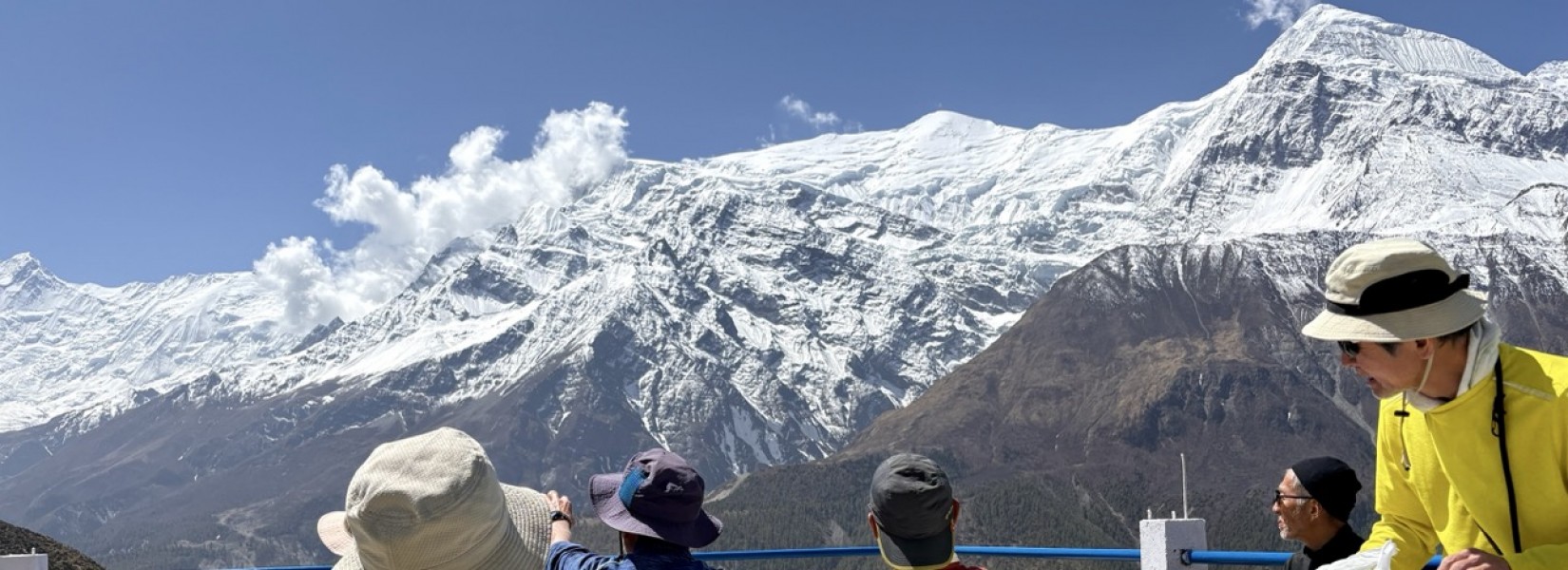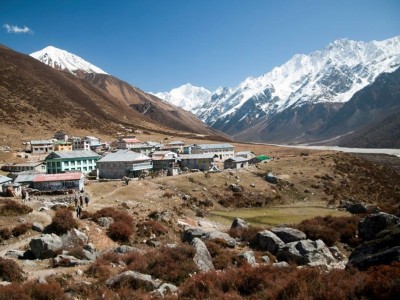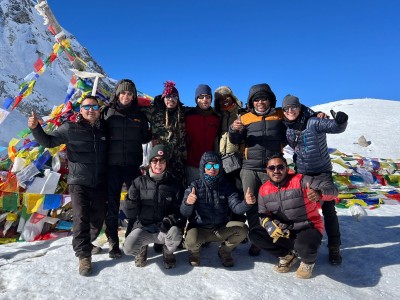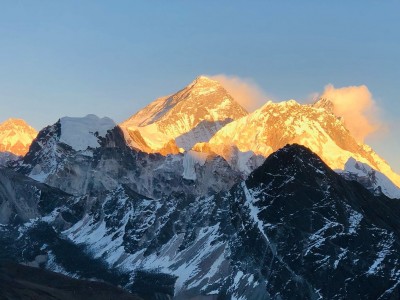Planning a trek in Nepal in 2025? Discover the ultimate guide to the best trekking routes in Nepal—from Everest Base Camp and Annapurna Circuit to hidden gems like Mardi Himal and Manaslu. This comprehensive guide covers trekking tips, permit info, packing lists, and the latest safety updates, helping you choose the perfect Nepal trekking package for your adventure. Whether you're a beginner or a seasoned trekker, this is your go-to resource for exploring the majestic Himalayas.
Ultimate Guide to Trekking in Nepal (2025)
Table of Contents
Top Routes, Travel Tips, Trekking Packages & FAQs
Nepal is a trekker’s paradise. Home to the world’s tallest mountains, centuries-old trails, and vibrant Himalayan culture, it attracts adventurers from around the globe. Whether you’re planning your first trek or looking for a new challenge, trekking in Nepal offers something unforgettable.
This guide covers the best trekking routes in Nepal, travel tips, and top Nepal trekking packages for 2025.
🌟 Why Trekking in Nepal is a Must in 2025
- ✅ Stunning Himalayan landscapes
- ✅ Rich cultural heritage
- ✅ Diverse trekking options for all levels
- ✅ Well-established trekking infrastructure
🏆 Top 7 Best Treks in Nepal for 2025
1. Everest Base Camp Trek
- Duration: 12–14 days
- Difficulty: Moderate to Difficult
- Highlights: Everest views, Namche Bazaar, Khumbu Glacier
The iconic Everest Base Camp Trek is a bucket-list adventure. Trek through the Khumbu Valley and stand face-to-face with the world’s tallest mountain.
2. Annapurna Circuit Trek
- Duration: 15–20 days
- Difficulty: Moderate
- Highlights: Thorong La Pass, Muktinath Temple
Experience diverse landscapes and ancient trails around the Annapurna range on this world-famous route.
3. Langtang Valley Trek
- Duration: 7–10 days
- Difficulty: Easy to Moderate
- Highlights: Langtang Lirung, Tamang villages, Kyanjin Gompa
Perfect for first-time trekkers looking for stunning views and cultural immersion just north of Kathmandu.
4. Manaslu Circuit Trek
- Duration: 14–17 days
- Difficulty: Challenging
- Highlights: Remote villages, Larke La Pass
One of Nepal’s lesser-traveled trails offering raw adventure and mountain beauty.
5. Ghorepani Poon Hill Trek
- Duration: 4–5 days
- Difficulty: Easy
- Highlights: Sunrise view of Annapurna & Dhaulagiri
Ideal for beginners and families, offering quick access to panoramic mountain views.
6. Mardi Himal Trek
- Duration: 5–7 days
- Difficulty: Moderate
- Highlights: Close views of Machapuchare, peaceful trails
A peaceful alternative trek with incredible ridge walking and alpine scenery.
7. Upper Mustang Trek
- Duration: 12–14 days
- Difficulty: Moderate
- Highlights: Tibetan culture, Lo Manthang, desert landscape
Step into the ‘Forbidden Kingdom’ with its ancient caves, monasteries, and dramatic scenery.
🎒 Trekking in Nepal: Tips Before You Go
- Best time to trek: March–May & September–November
- Required permits: TIMS, ACAP, MCAP, or restricted area permits (varies by route)
- Packing list must-haves: Down jacket, boots, thermal gear, water filter
- Solo trekking: Solo trekking is restricted in many regions – hire a licensed guide
🙋♂️ Frequently Asked Questions (FAQs)
1. Is trekking in Nepal safe for solo travelers?
Yes, especially in popular areas like Everest and Annapurna. However, hiring a licensed guide is mandatory in restricted regions like Manaslu and Upper Mustang for safety and permit regulations.
2. Do I need travel insurance for trekking in Nepal?
Yes. You should have insurance that covers high-altitude trekking (above 4,000m) and helicopter evacuation in case of emergencies.
3. What is the best time of year to trek in Nepal?
The best trekking seasons are:
- Spring (March–May): Clear skies, warm temperatures, and rhododendron blooms.
- Autumn (September–November): Stable weather and excellent visibility.
4. How difficult are the treks in Nepal?
Difficulty levels vary:
- Easy: Ghorepani Poon Hill, Mardi Himal
- Moderate: Annapurna Base Camp, Langtang Valley
- Challenging: Everest Base Camp, Manaslu Circuit
5. What permits are required for trekking in Nepal?
Permits vary by region:
- TIMS card – Required for most treks
- ACAP/MCAP – For Annapurna and Manaslu areas
- Restricted Area Permits – For areas like Upper Mustang, Manaslu, and Kanchenjunga
6. Can I trek in Nepal without a guide?
No. As of 2023, solo trekking is banned in most regions. A licensed guide is now required for safety and regulatory reasons.
7. What kind of accommodation is available during treks?
You’ll stay in local tea houses (lodges) with basic amenities. In remote regions, camping may be necessary.
8. How much does trekking in Nepal cost?
It depends on the trek:
- Budget treks: $30–50/day (self-guided or minimal support)
- Standard guided treks: $700–$1,500 for 10–14 days
- Luxury treks: $2,000+
9. What should I pack for a Nepal trek?
Key items include:
- Layered clothing, down jacket
- Waterproof boots and rain gear
- Trekking poles, first aid kit, headlamp
- Water purification tablets or filter
10. Can I charge my electronics during the trek?
Yes, but usually for a small fee. Bring a power bank or solar charger as backup in remote areas.
11. What is altitude sickness and how can I prevent it?
Altitude sickness (AMS) can occur above 2,500m. Prevent it by ascending gradually, staying hydrated, and taking acclimatization days. Consider Diamox if advised by a doctor.
12. Is Wi-Fi available on trekking routes?
Limited Wi-Fi is available in tea houses in regions like Everest and Annapurna, but speeds are slow. Local SIM cards may offer data in lower altitudes.
📞 Ready to Trek the Himalayas?
Our experienced team will help you plan the perfect Nepal trekking adventure. Contact us to customize your dream trip.




